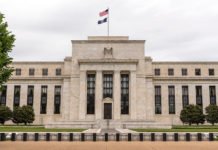2023 has arrived and it looks set to be another interesting year for financial markets. Diverging forces are at play leaving markets in a tug of war between different drivers.
In bond markets lower inflation and recession points to lower yields, but on the other hand still strong labour markets and high wage pressures as well as the Chinese reopening, which is set to be an inflationary force, is pulling in the other direction. An easing of financial conditions also challenge central banks as tighter conditions are needed to cool down the economy further. Hence, we see a risk of more hikes (and fewer cuts in H2 and 2024) than markets currently price – especially in the US. We look for bond yields to be range bound for some time caught in the middle of the diverging forces.
In equity markets lower inflation, somewhat better visibility than in 2023, the Chinese reopening as well as plenty of cash on the sideline are all positive forces that could reduce risk premia and underpin stocks. However, the outlook of recession, still hawkish central banks and profits under pressure still point to a more defensive stance. We believe stocks will end the year higher but see the short-term outlook being murky still. EM should benefit from the Chinese reopening as we have seen reflected in markets also lately.
In the FX market we see more two-way action for the USD. The USD has weakened lately but we look for a rebound as the market prices too few Fed hikes and current account imbalances still favour the USD. We look for EUR/USD to go back to previous lows around 0.98 over coming quarters but it is unlikely to happen in a straight line.
We see increasing signs that headline inflation has peaked. German inflation for December dropped to 8.6% y/y from 10.0% y/y while Spanish inflation declined to 5.8% y/y from 6.8% y/y. However, the drop in Germany was driven by a government-backed discount to the energy bill and core inflation was high in both countries. Oil and gas prices have moved lower this week adding downward pressure on goods inflation and transport services. However, a key concern for the ECB is still the tight labour market. In an interview last week, ECB President Christine Lagarde said that wages are probably rising faster than expected and limiting fast wage growth was key to reining in inflation.
The Fed also struck a hawkish tone in the FOMC minutes from the December meeting and Fed member Neel Kaskhari (voter, hawk) said on Wednesday he sees rates move to 5.4% (market prices peak around 5%). Like ECB, the Fed also highlights a tight labour market as key for sustaining the tightening path. In addition, easing financial conditions is a concern for the Fed, see also Research US – Good news is bad news for the Fed, 4 January.
China’ re-opening has led to a surge in Covid cases, but the wave looks set to peak within the next month. We look for a recovery starting in February/March, which will make China an inflationary force in the global economy again, see China Outlook – Earlier reopening to drive faster rebound, 3 January.
Next week all eyes will be on the US CPI for December. Lower gasoline and food prices will likely weigh on the headline (0.0% m/m), but services will continue to support core (0.3% m/m). In the euro area, we will keep an eye on data for unemployment and ECB comments following the recent CPI prints.













